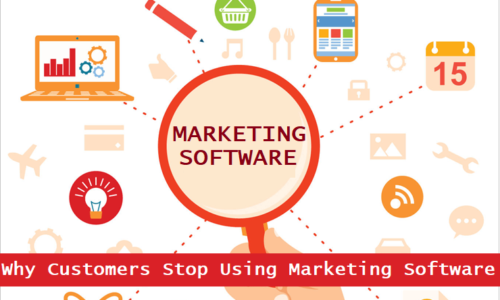 In today’s competitive market, small businesses must find ways to stand out and build meaningful connections with their customers. One of the most effective ways to achieve this is by crafting a compelling brand story. A brand story goes beyond marketing messages and slogans; it communicates the essence of your business, what it stands for, and why it matters to your customers. Meta Force Associates, a leader in customized website training, understands the power of storytelling in building strong customer relationships. This article explores how small businesses can create a compelling brand story that resonates with their audience and fosters lasting connections.
In today’s competitive market, small businesses must find ways to stand out and build meaningful connections with their customers. One of the most effective ways to achieve this is by crafting a compelling brand story. A brand story goes beyond marketing messages and slogans; it communicates the essence of your business, what it stands for, and why it matters to your customers. Meta Force Associates, a leader in customized website training, understands the power of storytelling in building strong customer relationships. This article explores how small businesses can create a compelling brand story that resonates with their audience and fosters lasting connections.
Understanding the Importance of a Brand Story
A brand story is a narrative that encapsulates your company’s values, mission, and journey. It provides context and meaning to your products or services, making them more relatable and memorable to your audience. A well-crafted brand story can:
- Differentiate Your Business: In a crowded market, a unique and authentic brand story helps you stand out from competitors and establish a distinct identity.
- Build Emotional Connections: Stories have the power to evoke emotions and create a sense of connection with your audience. A compelling brand story can foster loyalty and trust among customers.
- Enhance Brand Recall: A memorable brand story makes it easier for customers to remember your brand and associate it with positive experiences.
- Support Marketing Efforts: A consistent brand story provides a foundation for all your marketing and communication efforts, ensuring that your messaging aligns with your brand values and resonates with your audience.
Key Elements of a Compelling Brand Story
To create a compelling brand story, small businesses should focus on the following key elements:
- Authenticity
Authenticity is the cornerstone of a compelling brand story. Customers are drawn to genuine stories that reflect the true essence of a business. Be honest about your company’s origins, mission, and values. Share the challenges and successes that have shaped your journey and made your business what it is today. - Purpose
Every brand story should have a clear purpose that goes beyond profit. Define the mission and values that drive your business and explain why they matter to your customers. Highlight the positive impact your business aims to make in the world, whether it’s supporting sustainable practices, empowering local communities, or providing innovative solutions. - Relatability
A compelling brand story should resonate with your target audience by addressing their needs, desires, and aspirations. Use language and imagery that your audience can relate to and understand. Share anecdotes or examples that reflect common experiences and challenges, making it easier for customers to see themselves in your story. - Emotion
Emotions play a powerful role in storytelling. Craft a narrative that evokes emotions such as joy, empathy, inspiration, or nostalgia. Use storytelling techniques such as vivid descriptions, personal anecdotes, and emotional appeals to create a lasting impact on your audience. - Consistency
Consistency is key to building a strong brand identity. Ensure that your brand story is consistent across all touchpoints, including your website, social media, marketing materials, and customer interactions. Consistent messaging reinforces your brand values and helps customers build trust in your business.
Steps to Create a Compelling Brand Story
- Define Your Brand Identity
Before crafting your brand story, take the time to define your brand identity. Consider the following questions:- What is the mission and purpose of your business?
- What values and principles guide your actions?
- What makes your business unique and different from competitors?
- Who are your target customers, and what are their needs and preferences?
- Answering these questions will provide a solid foundation for your brand story and ensure that it aligns with your overall brand identity.
- Identify Key Story Elements
Identify the key elements that will form the basis of your brand story. These may include:- The Origin Story: Share how your business was founded and the inspiration behind it. Highlight any challenges or obstacles you overcame to reach where you are today.
- The Mission: Explain the mission and purpose that drive your business. Describe how you aim to make a positive impact on your customers and the world.
- The People: Introduce the people behind your brand, including founders, employees, and customers. Highlight their roles, contributions, and personal stories to humanize your brand.
- Craft a Narrative Arc
A compelling brand story should have a clear narrative arc that captures the attention of your audience. Consider using the classic storytelling structure of beginning, middle, and end:- Beginning: Set the stage by introducing your brand, its origins, and the challenges you faced.
- Middle: Describe the journey and evolution of your business, highlighting key milestones and achievements.
- End: Conclude with your current success and vision for the future. Reinforce the impact your brand aims to make and invite your audience to be a part of the journey.
- Use Visual Storytelling
Visual storytelling enhances the impact of your brand story by making it more engaging and memorable. Use visuals such as images, videos, and infographics to complement your narrative and bring your story to life. Ensure that your visual elements align with your brand identity and reinforce your messaging. - Share Your Story Across Platforms
Once your brand story is crafted, share it across all relevant platforms and touchpoints. This includes your website, social media profiles, marketing campaigns, and customer communications. Encourage your team to embody and communicate your brand story in their interactions with customers.
This company offers training and support to help small businesses effectively share their brand story across digital platforms, ensuring consistency and impact. - Engage Your Audience
Encourage your audience to engage with your brand story by inviting them to share their own experiences and stories related to your business. Use social media, reviews, and testimonials to gather user-generated content that reinforces your brand narrative. This engagement builds a sense of community and strengthens the emotional connection with your audience.
The Role of Meta Force Associates
Meta Force Associates provides guidance and training to help small businesses create compelling brand stories that resonate with their audience. Their expertise in website development and digital marketing equips business owners with the tools and strategies needed to craft and share impactful narratives. By focusing on authenticity, emotion, and consistency, Meta Force Associates ensures that businesses can build strong connections with their customers.
Conclusion
A compelling brand story is a powerful tool for small businesses looking to connect with their customers and differentiate themselves in a competitive market. By focusing on authenticity, purpose, relatability, emotion, and consistency, businesses can create narratives that resonate with their audience and foster lasting relationships.
Meta Force Associates offers the support and expertise needed to develop and share compelling brand stories that drive success. By embracing storytelling, small businesses can enhance their brand identity, build trust, and achieve long-term growth in the digital landscape.

